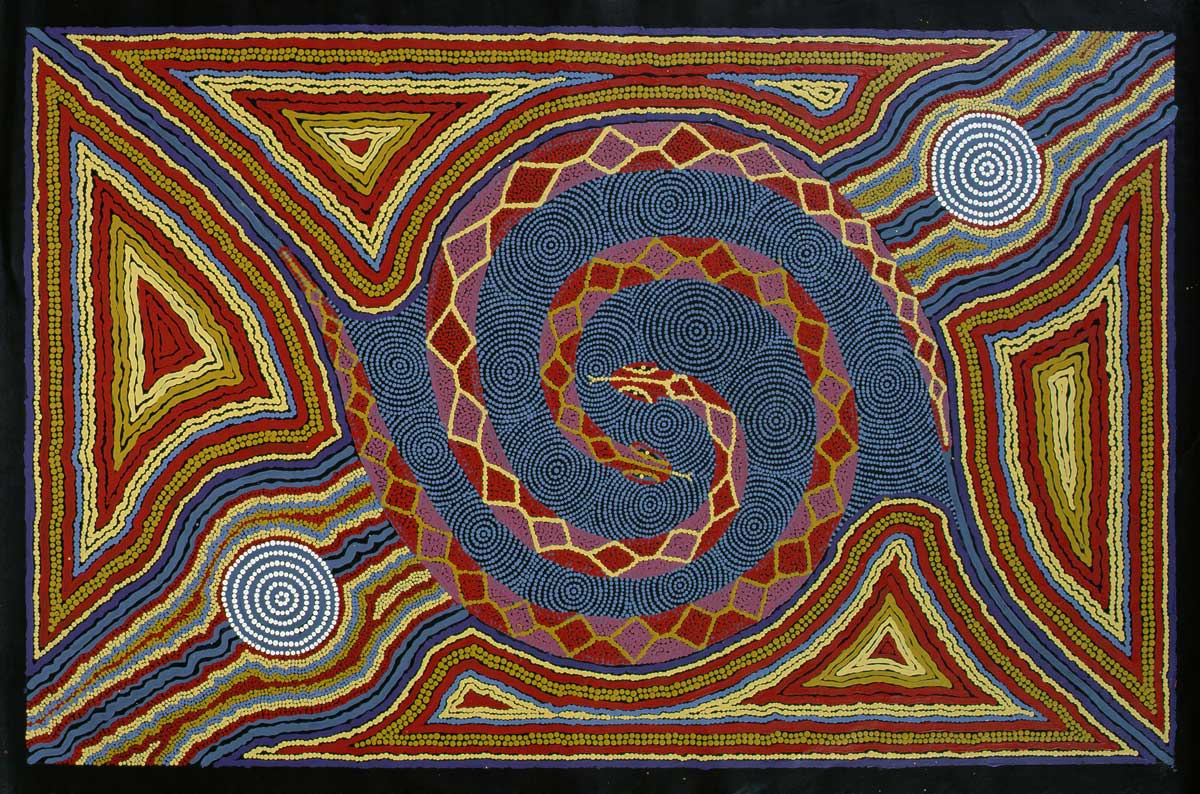Jukurrpa | History Today - 2 minutes read

For Aboriginal Australians, Jukurrpa is fundamental to how the world came into being. The word has its origins in the Warlpiri language, spoken in the vast desert landscapes of the Northern Territory, but is now commonly used in several Aboriginal languages. The Northern Territory has been inhabited by Aboriginal peoples for up to 50,000 years and analyses of rock engravings show that motifs still used in Aboriginal art are at least 12,000 years old.
Taking place in ‘a different time, different to now’, Jukurrpa describes how ancestral beings criss-crossed the desert landscape, giving it features and creating life, before they returned to the earth or exploded into celestial constellations. Hills, rocks, rivers and waterholes became sacred sites, including Uluru and Mparntwe (Alice Springs). The resulting network of ‘Dreaming Tracks’ delineated lands and borders and the responsibilities of the peoples within them.
Jukurrpa is conveyed through ceremonies, creation narratives, group gatherings and song. In Aboriginal art motifs should be completed quickly to try to capture the supernatural quality of the Jukurrpa depicted. The curator Wally Caruana has described the widespread use of dots, ‘to indicate differences in topology and vegetation’ and ‘evoke the presence of supernatural power in the earth’.
The forced separation of Aboriginal children from their families and annexation of traditional territories continued for much of the 20th century. Malcolm Maloney Jagamarra (b.1955), an artist from Warlpiri country, was one of the Stolen Generation, forcibly placed into foster care. He did not return to his ancestral lands until 1978. Jagamarra’s traditional rights allow him to depict Warna Jukurrpa (Serpent Dreaming). The artwork shown here is Wantapiri (1994), which can be translated as ‘sun snakes’. Serpents, one of the principal ancestral beings, crossed the barren landscape creating the rivers and waterholes that are essential to life.
Source: History Today Feed